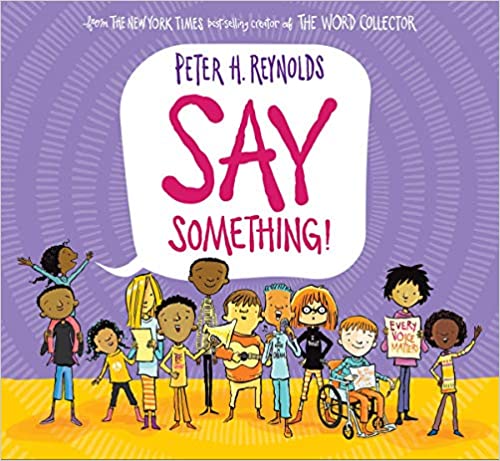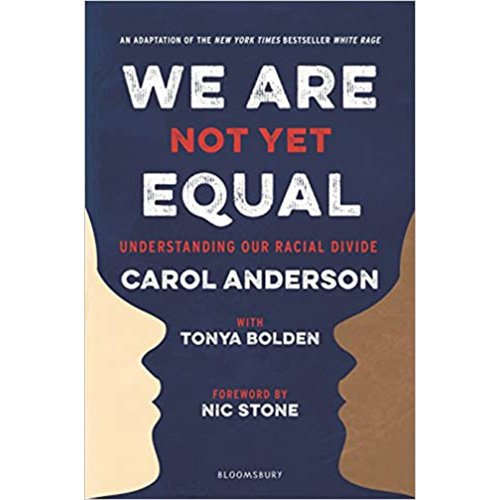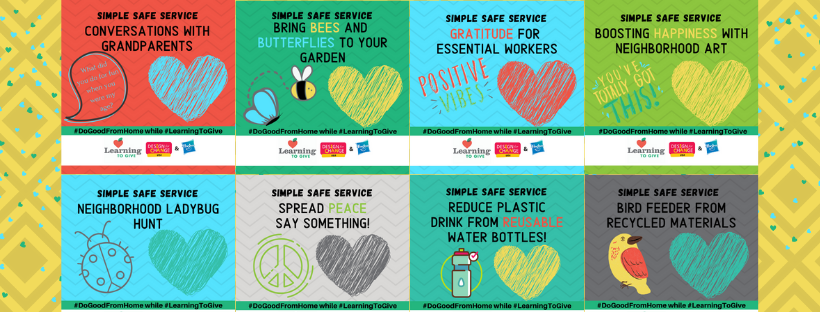Connecting Virtually in Community
The demands of staying safe during the COVID-19 crisis can feel isolating and difficult. Young people miss their friends and the routines of classes, sports, and social interactions. While it is easy to identify the down sides of this pandemic, calling attention to the generous nature of this global effort - what we can do for the common good - can help us feel better about the difficulty of staying apart from friends, loved ones, and school. This also opens an opportunity for creativity and finding solutions that challenge us to think of others.
Try this three-part activity:
- With a small group of friends or family, first ask people to brainstorm the positive side of the pandemic. Write the ideas down. When the ideas slow, encourage deeper thinking. One group of teachers who recently did this realized a hidden benefit was that youth appreciate their school more. They see it as a place they feel connected, a place to get regular meals, and a place of safety; they were eager to go back to school!
- Second, brainstorm the challenges of the pandemic, especially as they relate to young people. Write the ideas down. Encourage deeper thinking.
- Third, look over the list of challenges and talk about them in terms of how to address the challenges for the good of others. Discuss different ideas, solutions, creative proposals, and possibilities. Then zero in on one thing to do to take action for others to address that challenge.
For example, the challenge of young people missing sports may be addressed in a very small constructive way by youth organizing a game through a virtual platform. Participants meet and talk, split up to do a physical challenge with a measurement, then come back and share their measurements and experiences. The challenges may be a scavenger hunt, a run, or a set of exercises.
Everyone has ideas, and there are many small actions we can take that help others and get us out of negative thinking and our own heads. Follow the discussion to action that empowers.
In times of uncertainty the question of “how and where do we fit in all of this?” is on everyone's mind. As caring adults, we can help young people find their fit by building empathy and generosity. Learning to Give can help with resources and information. We are all in this together, and together we will build a future that prioritizes social justice and progress. As a result, we're adding a number of social justice related lesson plans, as well as SEL related activities guides for you to share with colleagues or the young people in your life.
Learning to Give is committed to promoting dialogue and skills for young people to consider their role in promoting a more just and equitable society. This is a long-term progression from the youngest conversations about kindness and empathy to responding to literature, and also to the more sophisticated lessons on advocacy or analyzing roots and effects.
Start with Books
A book is a great discussion starter, enhanced by a combination of knowledge and personal connection. Sharing books provides an opportunity for putting yourself in other places, times, and in the minds of diverse people. Here are some good books to read and discuss related to inclusion, and our full collection of literature guides. The featured books in our literature guide collection raise issues like respect, caring, giving, honoring diversity, adversity, helping others, fairness, responsibility, trustworthiness, and citizenship.
Learning to Give picture book and teen novel guides combine selected literature with thought-provoking discussions and activities that teach about giving and civic engagement.
Simple Projects from Home
Use our Simple Safe Service project guides to give your family ideas for generous actions that encourage youth voice and promote the common good, even when we are apart. Each project includes step-by-step instructions, reflection, and a connection to an optional lesson plan.
Social Awareness
In these times, everyone has something to give to make things a little better. Whether we are teaching remotely or using a hybrid model, our learners need connections to a social community and a purpose bigger than themselves. As educators and families, we grow social and emotional skills and sense of purpose by building community. A very important component is listening and speaking with generosity. Our intent is to provide activities and experiences that promote generous collaboration, communication, creativity, and critical thinking. Our students must feel that "it mattered that I came," or they will lose interest in their education.
- Social Emotional Learning - Five Activity Guides define the core competencies of Social Emotional Learning as they relate to youth finding their personal and collective role in community. Videos and activities help develop Social Emotional Learning in a remote setting after youth have experienced separation and trauma. .
- Social Justice - We have a rich tradition of social action and citizenship in our country. In a time of crisis, we look to generosity to guide our next steps for more inclusion and conversation. These lessons and activities help build connection and inclusive community even when we are not in person. The guided facilitation takes learners through a journey of empathy, making decisions, taking voluntary action, and finally telling our own stories to make a better world.
Current Events:
- Current Events - arts and the power of language in building a positive community.
More Tools from Learning to Give
- These Issue Area toolkits on specific areas of service guide learning, service, and connection to community - great for groups or youth-directed service.
- Share this video “Philanthropy and Service-Learning: Why Do They Matter?” with your kids to help them understand the word and act of philanthropy.
- Learn about the tools of generosity from a variety of Learning to Give resources, beginning with stories of youth in action: Get Started here.
- Build empathy by asking, “I wonder what [my friend, my grandma, my neighbor] feels like in this pandemic?"
Other Resources
- Use this list of anti-racism resources curated by Sarah Sophie Flicker and Alyssa Klein: bit.ly/ANTIRACISMRESOURCES
- Talk to your children about online safety since they are online more than ever. Follow these tips from the U.S. Department of Justice.
- Watch these inspiring “Kindness 101” videos with CBS TV’s On the Road with Steve Hartman.
- Play games that are fun and active with your family: Play Works
- Turn being at home into a positive! This article by Greater Good Magazine offers a few suggestions for how you can take this time with your family to strengthen your relationships
A strong community looks for solutions and opportunities in times of uncertainty. A growth mindset frames the following things as opportunities: differences, lack of information, conflict, mistakes, and misunderstandings. In the shift to fall and the beginning of the school year, we have the opportunity to find positive solutions and ways to support one another as members of a civil society made up of beautifully diverse people. Together, we’ll get through this. We ALL have something to give.



